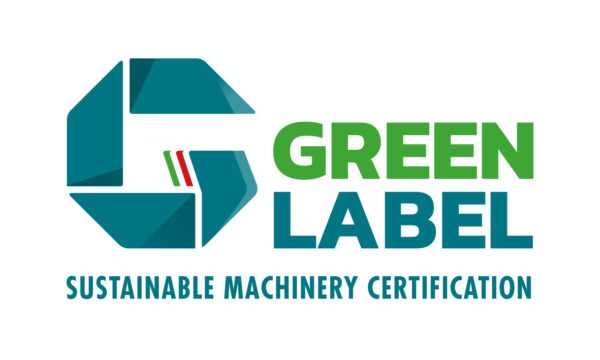RINA, an international certification body, has validated the process of issuing the Green Label and its test measurements. On the basis of a standardized and certified procedure, RINA intervenes to verify both the way in which are measured and the operating conditions of the machines being labelled (every two years on 20% of the companies participating in the project).
At the end of the on-site audits, RINA issues a certificate of conformity which certifies compliance with the Regulation by member companies and the veracity of the performance data of the Green Label certifications issued.
What is The Green Label?
The Green Label is designed to measure the energy and environmental performance of textile machinery
The Green Label is a document whose purpose is to identify and make easily understandable the energy and environmental performance of textile machines, with reference to a process chosen by the manufacturer as a comparison parameter.
Thus, in the absence of internationally recognized standards for classifying energy and/or environmental performance for textile machinery, Italian manufacturers are promoting a tool that aims to highlight some machinery performance data. This information can also be compared with competitors.
Awareness of achievements in technological excellence, including in terms of sustainability, is one of the Italian textile machinery sector’s elements of strength, placing it at the forefront of sustainable technological solutions to support the textile industry.
In particular, the quantity of equivalent emissions of carbon dioxide (Carbon Footprint – CFP) produced during the machinery’s operation is the parameter chosen to provide a value to the eco-efficiency of the labelled machinery.
Technology, innovation and sustainability: the keys to the textile industry’s future
Italian textile machinery manufacturers play a major role in promoting new trends linked to green technologies in their manufacturing sector. The playing field on which the textile industry is hedging its competitive edge is environmental, economic and social sustainability.
Regulations and new environmental legislation, also applied to the textile sector, urged on by environmental movements and precautionary policies on chemical safety standards for major brands, have accelerated the change in the entire textile supply chain, which is now more than ever sensitive and attentive to these issues.
ACIMIT’s role in promoting a sustainable textile industry
Within this context, ACIMIT, the Association of Italian Textile Machinery Manufacturers, has launched the “Sustainable Technologies” project, coordinated by the RINA certification body, in an effort to develop and promote key sustainability issues for the textile industry.
The gold standard of the “Sustainable Technologies” project is the Green Label: a voluntary declaration by Italian textile machinery manufacturers designed to highlight the energy and/or environmental performance of a given machine, calculated in reference to a production cycle defined by the manufacturer for labelled machinery.
Overall, the ACIMIT Green Label represents a significant step towards fostering sustainability and environmental stewardship in the textile machinery industry, aligning with global efforts to mitigate environmental impact and promote sustainable development.





















